Affiliate links on Android Authority may earn us a commission. Learn more.
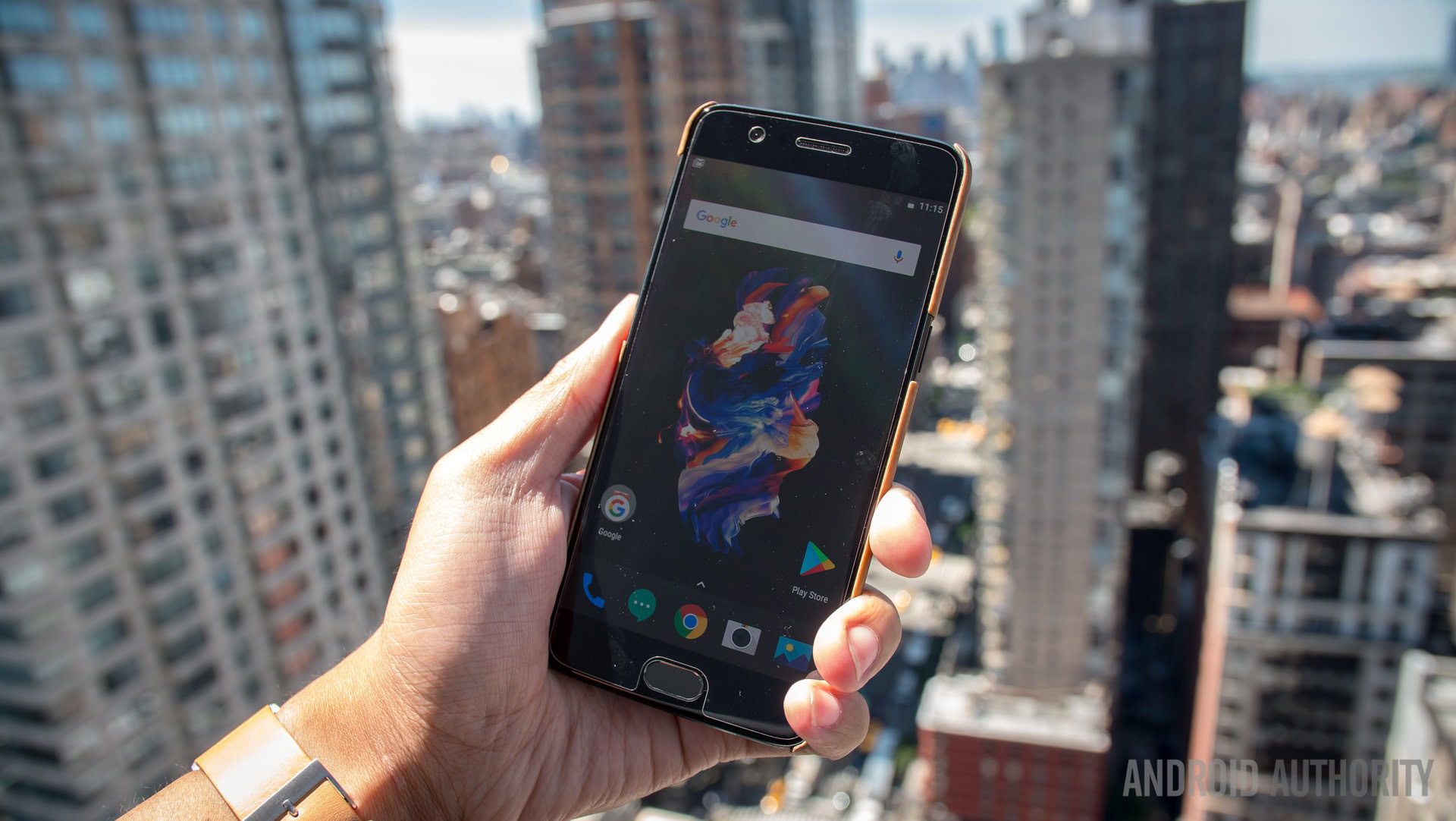
OnePlus 5
What we like
What we don't like
Our scores
OnePlus 5
For a company that is only a few years old, OnePlus certainly has made a lot of positive strides in its short history. Going from an invite-only affair and growing into one of the most impressive low-cost phone brands on the planet, it’s hard not to be at least a little impressed. Of course, OnePlus hasn’t been without its share of drama and growing pains along the way (remember that “Ladies First” disaster?). Thankfully those days are long behind them.
So what’s next for OnePlus? We’re only a little over 6 months removed from the OnePlus 3T but, whether you’re ready for it or not, OnePlus’ new flagship is here.
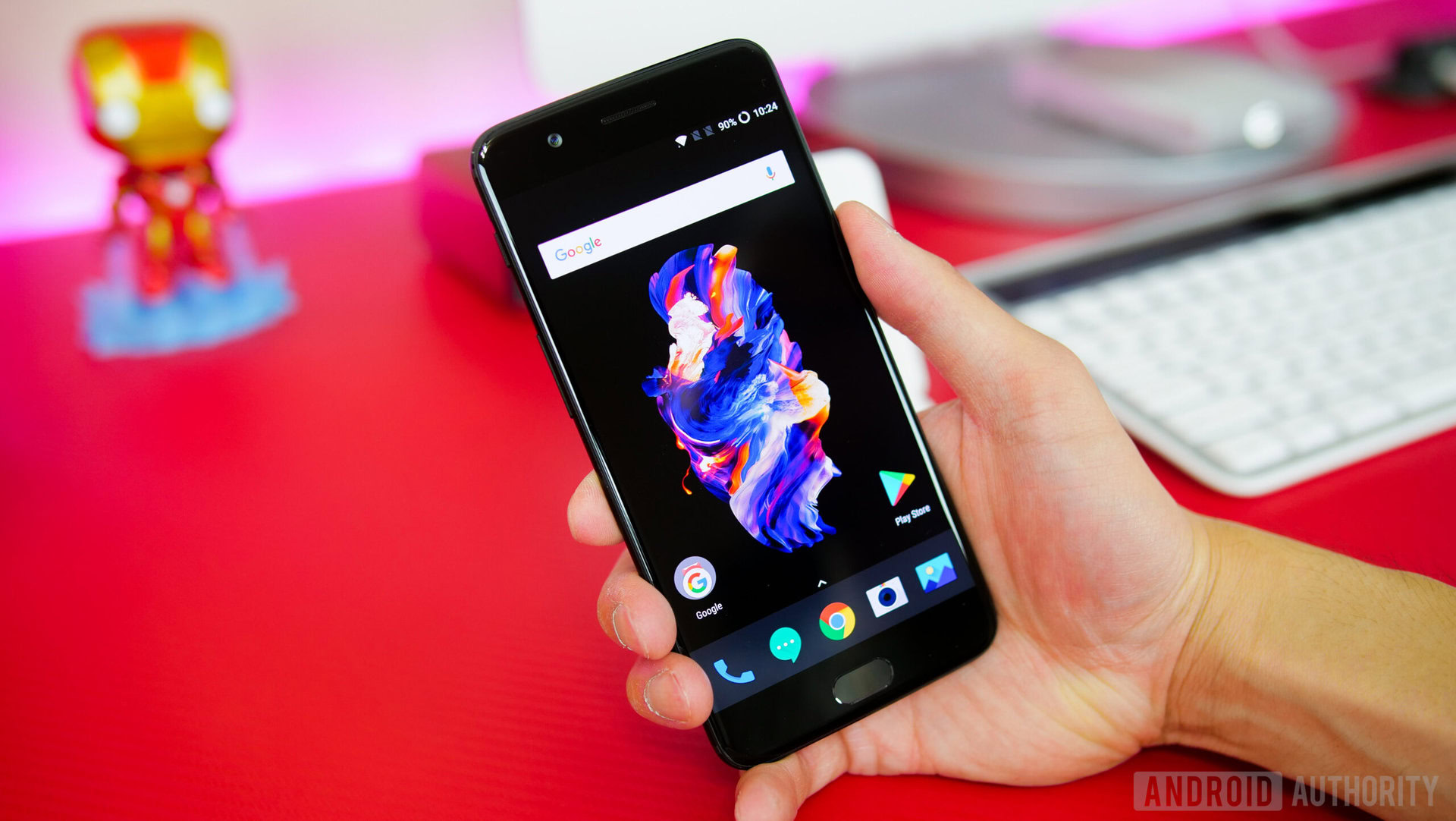
While the 3T was just an iterative update from the OnePlus 3, the new OnePlus 5 represents a much bigger change for the company. The latest flagship offers an updated design, as well as modern specs that easily compete with today’s most powerful flagships. These improved features don’t come without some sacrifice, however, as the OnePlus 5 is the most expensive release from the company to date.
The 5 starts at $479 — a far cry more expensive than the company’s 2014 flagship, the $299 OnePlus One. To be fair, the pricing here is still more affordable than many high-end flagships, and OnePlus has actually be slowly increasing its pricing structure with each iteration of the OnePlus line, so we honestly can’t say we are too surprised.
The big question is whether OnePlus’ price increase is worth it, and if the OnePlus still provides a great value for the asking price. That’s exactly what we aim to answer in our full OnePlus 5 review.
Design
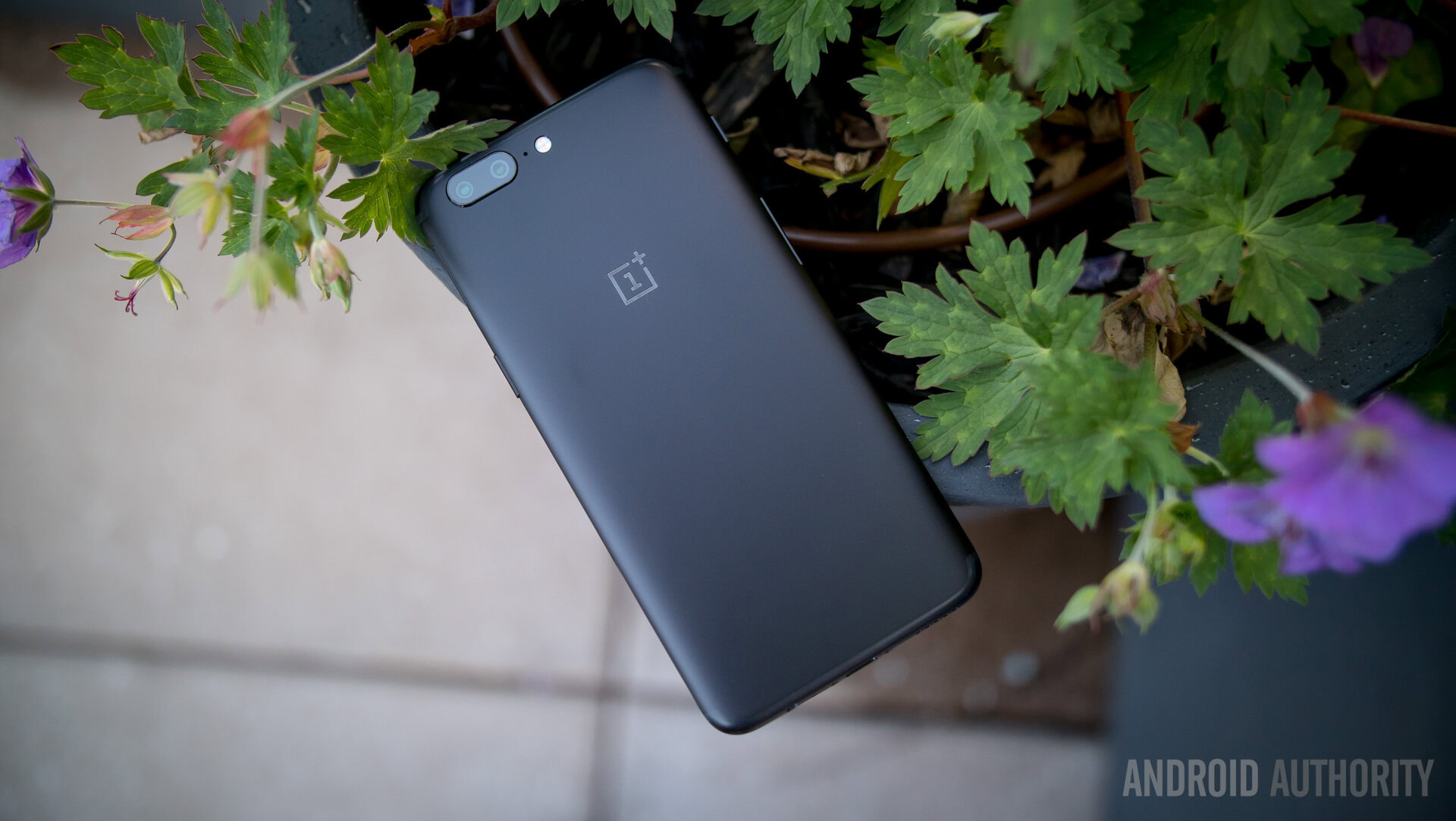
Just like the OnePlus 3 and 3T before it, OnePlus’ latest flagship offers a metallic body, though it’s much thinner this time around. Not only is the handset just 7.25 mm thin, it also features an aggressive taper around the sides that makes the phone feel even thinner. The antenna lines have also been redesigned to go around the perimeter of the phone instead of cutting across the back, making them a lot less noticeable.
Thanks to the rounded corners and edges, the OnePlus 5 looks great and is comfortable to hold. Still, it is worth noting that the thin sides make the phone a bit on the slippery side.
Just like the OnePlus 3 and 3T before it, OnePlus' latest flagship offers a metallic body, though it's much thinner this time around.
The new design changes are going to be a bit polarizing for some of you. While I’m certainly a fan of most of these changes, it is hard to deny that the OnePlus 5 heavily resembles an iPhone 7 Plus, especially with the addition of a dual camera system that’s similarly shaped and sits in the same location. I am happy to report that, unlike the iPhone, the OnePlus 5 does retain its headphone jack though.
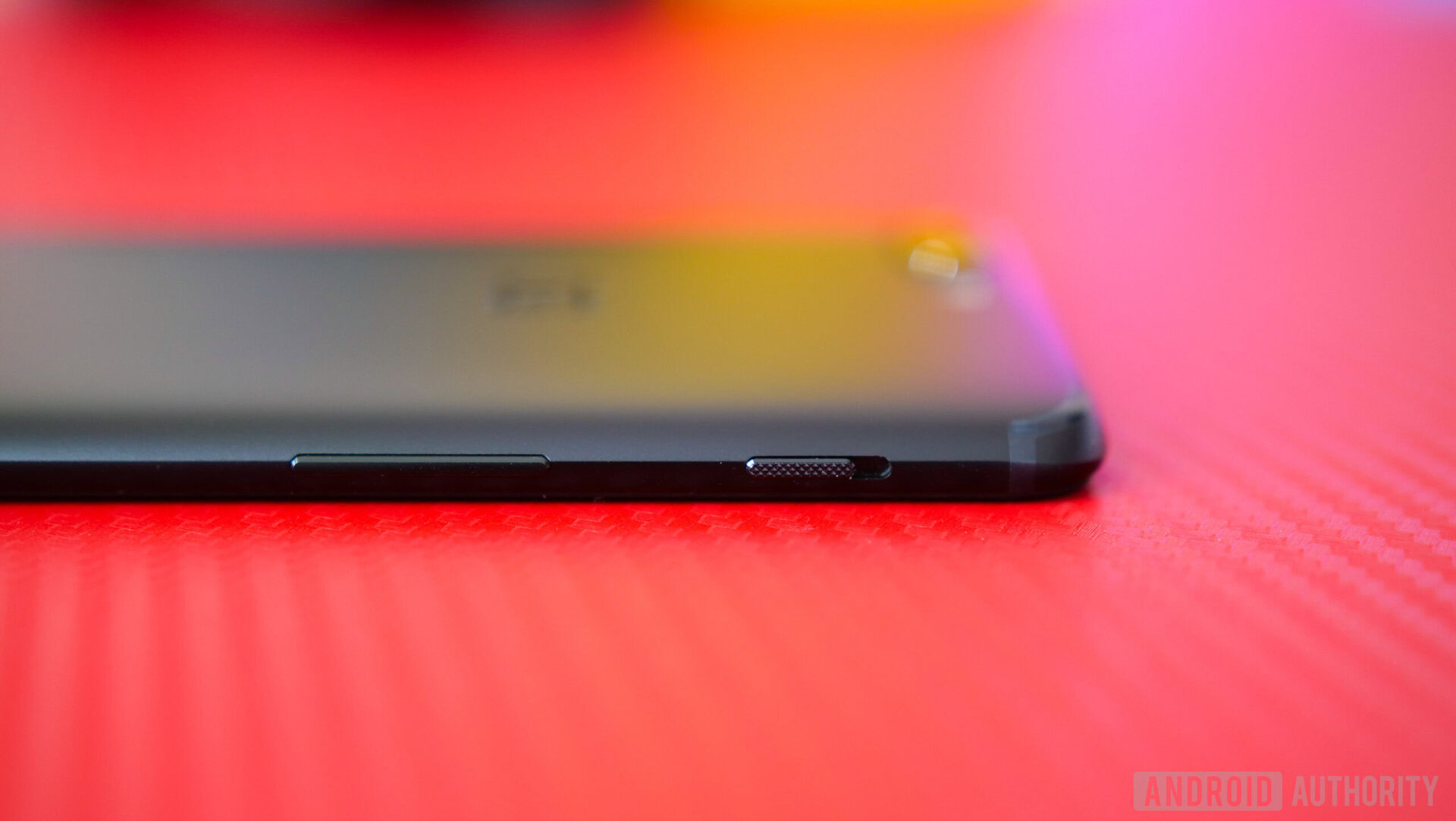
OnePlus offers a much more limited selection of color options compared to many other modern flagships out there. If you pick up the base model (64 GB storage, 6 GB RAM), you’ll get it in Slate Gray. The more expensive model (128 GB storage, 8 GB RAM) comes in Midnight Black.
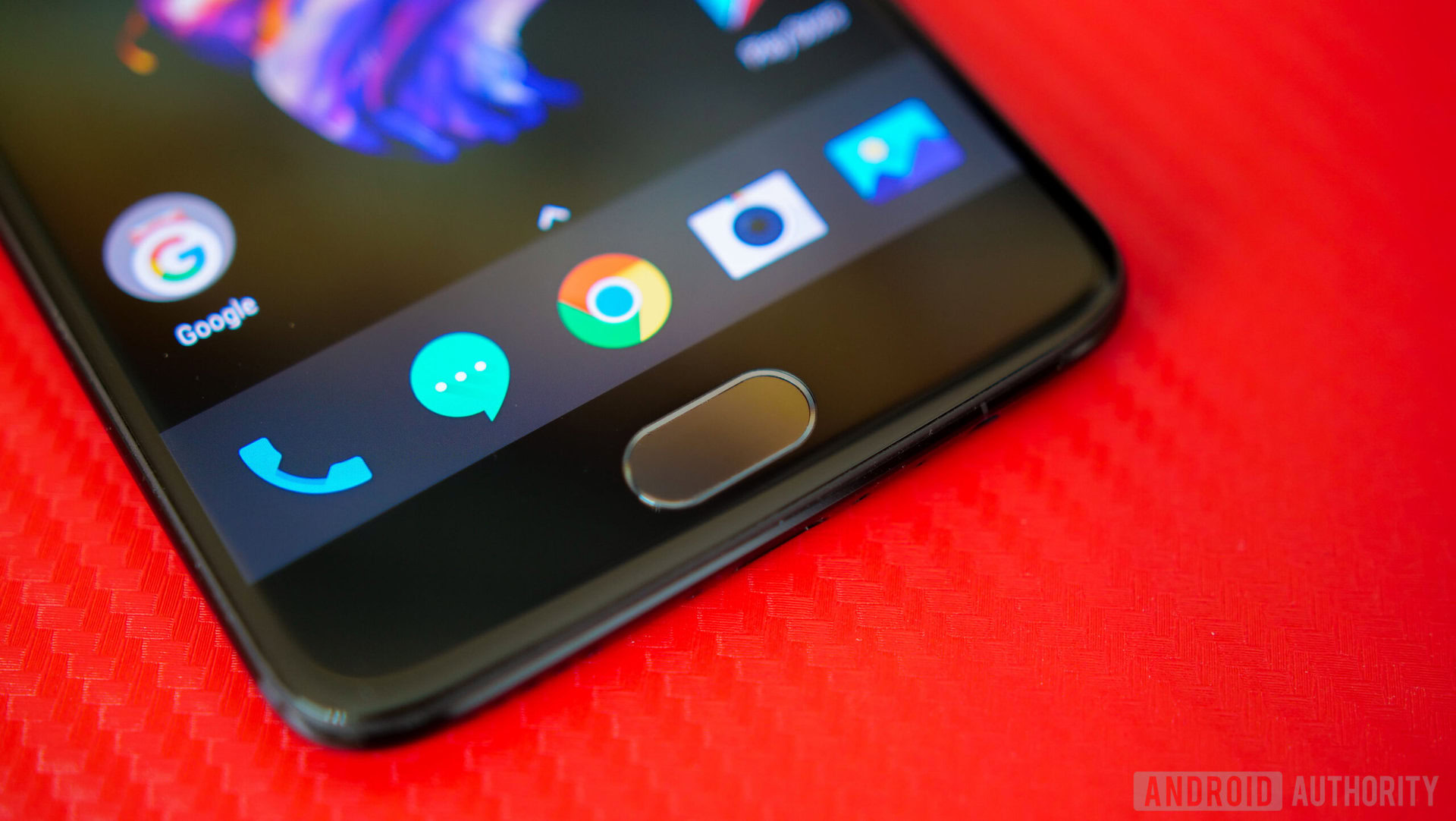
For those familiar with the OnePlus 3T, you’ll find the button placement here hasn’t really changed; the 5’s volume and alert slider are found on the left, the power button the right, the headphone jack on the bottom right, the USB Type-C port in the bottom center, and the speaker on the bottom left. Turning towards the front, the OnePlus 5 has a home button that functions as a fingerprint scanner, flanked by capacitive back and Recent Apps keys. The back key is on the left and the Recent Apps key is on the right by default, but you can flip the orientation if you prefer, via the Settings.
Overall, this still feels like a OnePlus phone, even if the inspiration for its design improvements are pretty obvious.
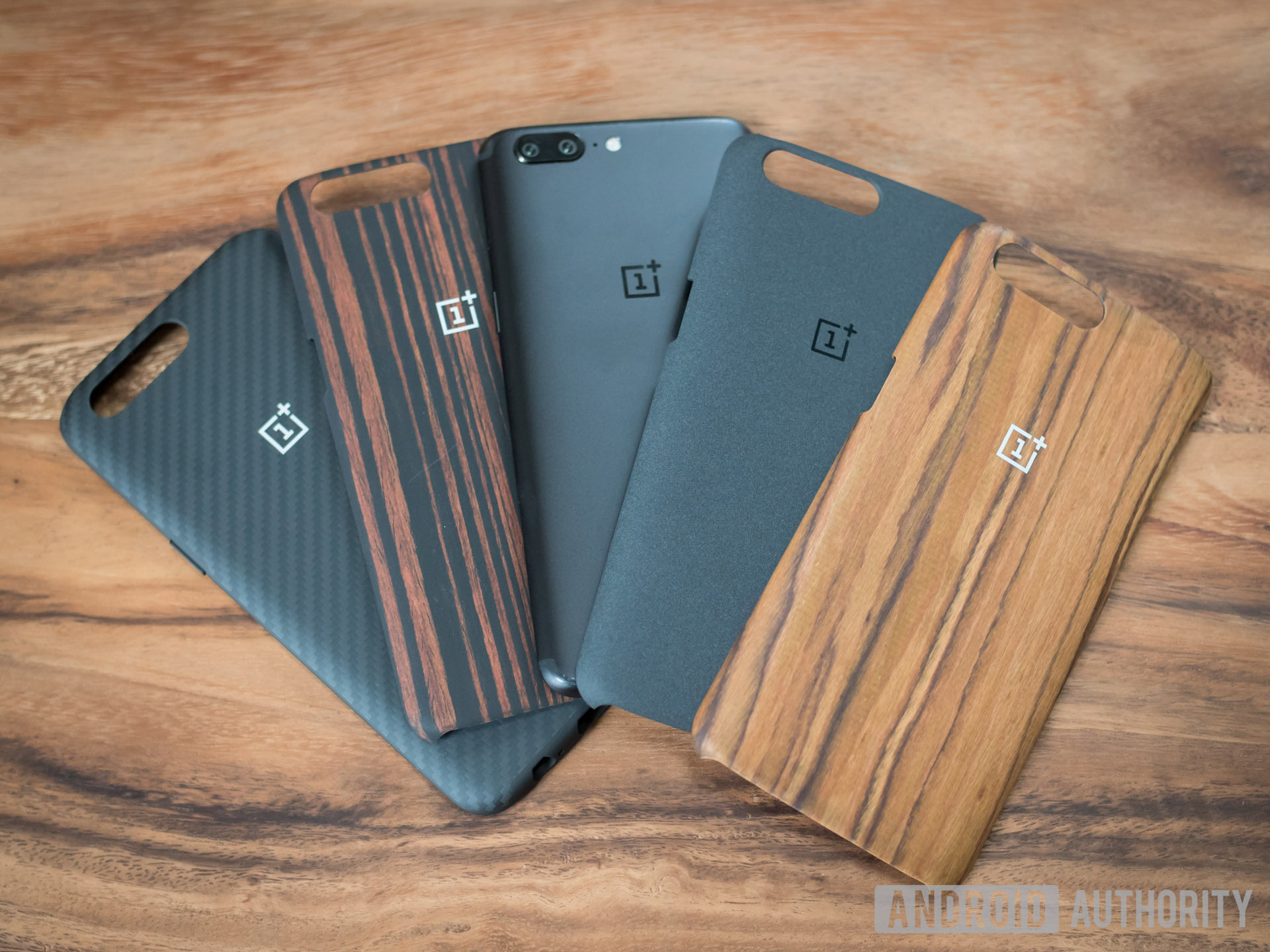
Display
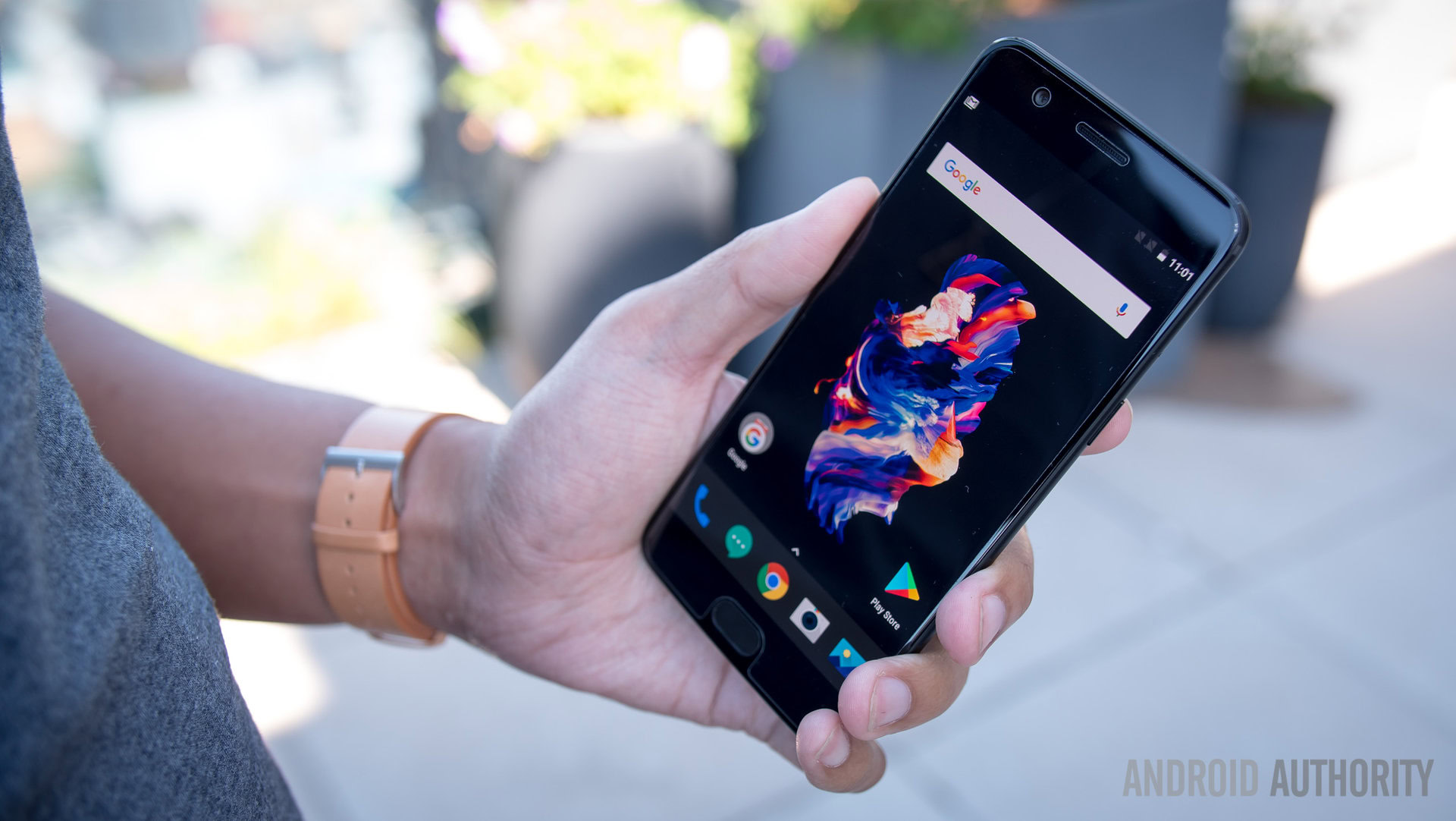
In a world where QHD has quickly become the standard, and even a few phones have offered 4K displays, OnePlus takes a step backwards by sticking to a “old-fashioned” 1080p 5.5-inch AMOLED panel with a 16:9 resolution. Well, at least it is a step backwards on paper. Despite only being 1080p, the screen looks absolutely gorgeous and is probably the best Full HD panel ever to grace a smartphone.
The display offers vibrant colors that are full of contrast and deep blacks. It gets very bright, too, so even direct sunlight isn’t a real issue.
If I didn’t know it was 1080p, I’d probably think it was of a higher resolution than this. In other words don’t judge the display merely by its spec sheet, because this isn’t your typical 1080p display of yesteryear.
Performance & Hardware
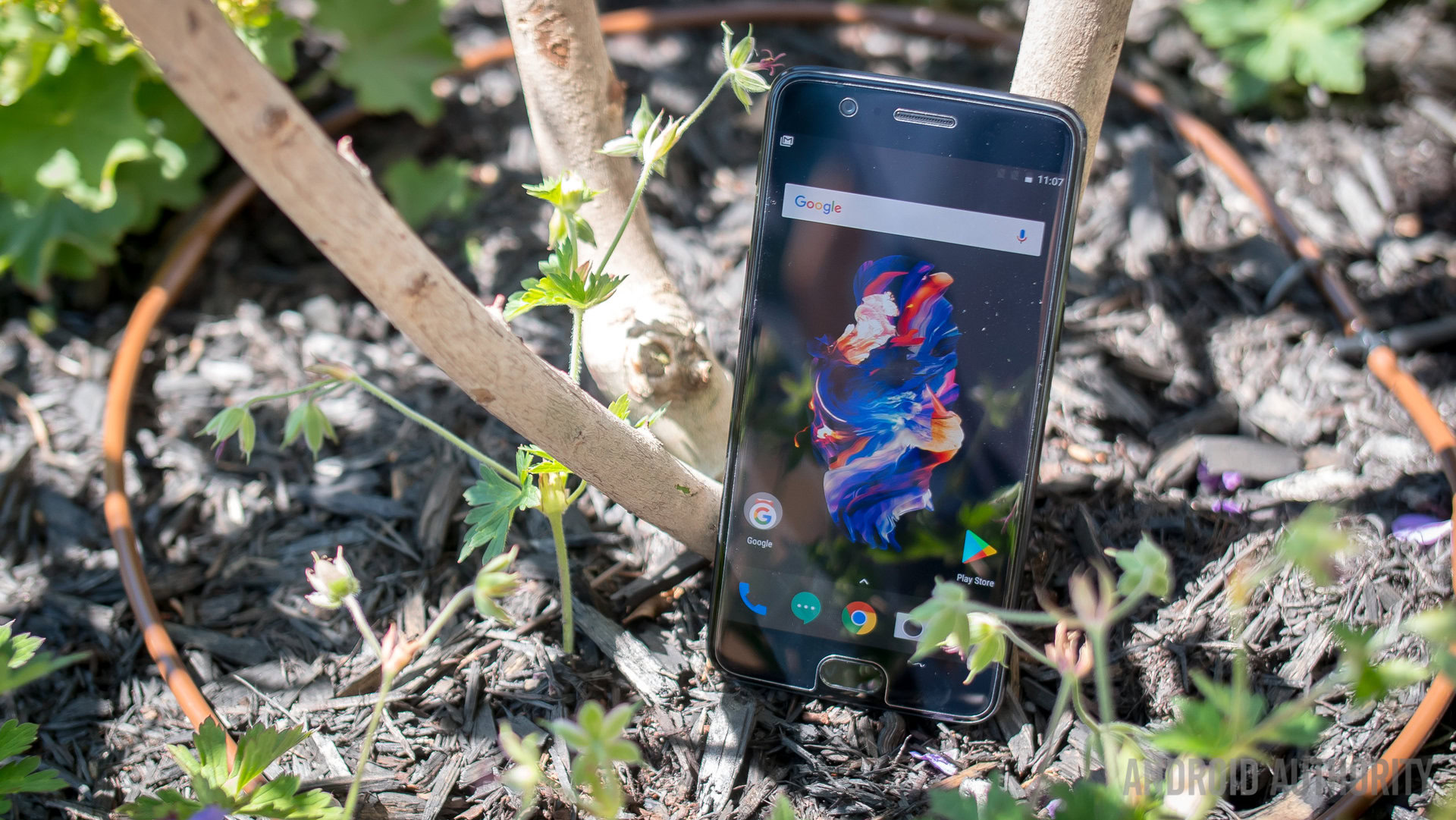
As mentioned, the OnePlus 5 is offered in two variants. The base model has 64 GB storage and 6 GB RAM, while the more expensive variant has a whopping 128 GB storage and 8 GB RAM. Both phones are powered by the same Qualcomm Snapdragon 835 and Adreno 540 GPU. For this review I had the opportunity to test out the 128 GB/8 GB model, and I have to say — this phone is crazy fast!
The OnePlus 5 easily performs at the same level as other more expensive flagships (if not arguably a bit better) and probably has more power than anyone would ever need in a smartphone. That’s not a bad problem to have, of course.
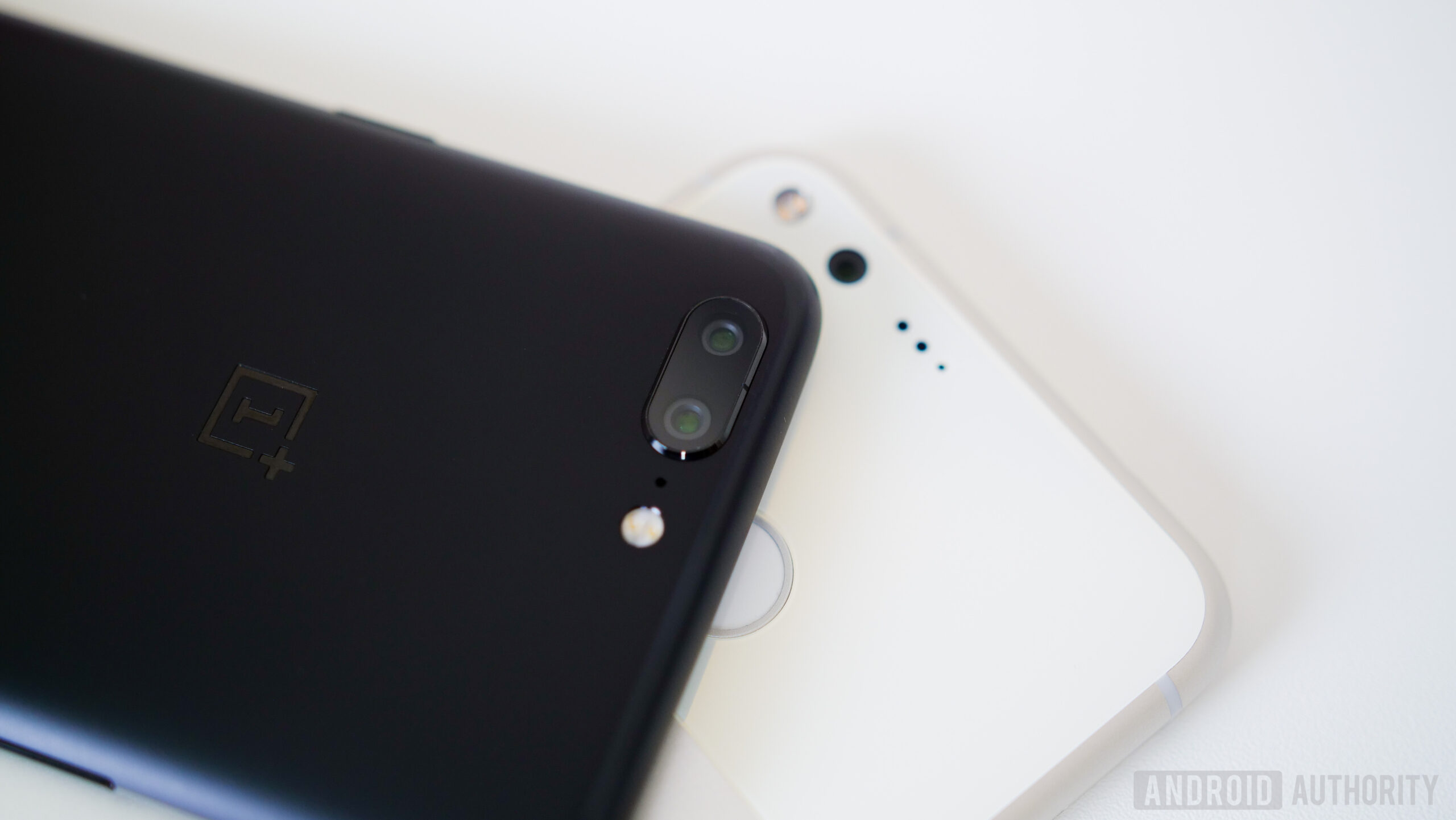
Apps and games open quickly, scrolling is very smooth, and moving through the interface is nice and fluid.
Apps and games open quickly, scrolling is very smooth, and moving through the interface is nice and fluid. Touch response also feels much improved over previous OnePlus phones and seems to track my fingers a lot better when I’m typing, scrolling, or swiping. With so much RAM onboard this phone can hold a ton of apps in memory without ever breaking a sweat and it always felt snappy and responsive no matter how many apps I had open.
I’m not personally a fan of benchmarks, because I feel the on-paper story doesn’t always translate into the real world experience. That said, we understand many of you like to see performance quantified. With that in mind, we ran the OnePlus 5 through Geekbench, where it scored 1,950 on the single-core test and 6,707 on the multi-core test. Putting that into perspective, the Samsung Galaxy S8 scored 1945 when we ran it through the single-core test, and 6711 on the multi-core. Meanwhile, the HTCU11 scored 1912 on the single, and 6137 on the multi-score.
Obviously each time you run a benchmark, the score will vary a little, so factoring that in, the picture painted here is that the OnePlus 5 is every bit the performer that you’ll find with other new Android flagships.
In short, the OnePlus 5 is a beast, and this story continues with the graphics department. Running the phone through 3DMark, the phone scored 3480 on Sling Shot Extreme. The Samsung Galaxy S8 scored 3470 on the same test, with the HTCU11 scoring 4483. Again, showing the phones are pretty much performing on the exact same level.
So that’s the processor and graphics. Moving past the processing package, the 5 offers a few other standout features, including one of the fastest front-facing fingerprint scanners I’ve ever used. We also like that it’s covered in ceramic so you don’t have to worry about it getting scratched up.
In short, the OnePlus 5 is a beast, both when it comes to processing and graphics.
As already briefly mentioned, the OnePlus 5 also keeps the ever so useful alert slider, which makes switching between different notification profiles an effortless experience. Although this isn’t new, it’s a feature that’s still very unique to OnePlus. The OnePlus 5 also has two SIM card slots – a feature not particularly common in phones, especially those offered in the states. It also comes with the latest Bluetooth 5, which is currently only supported by a couple other phones as of this writing.
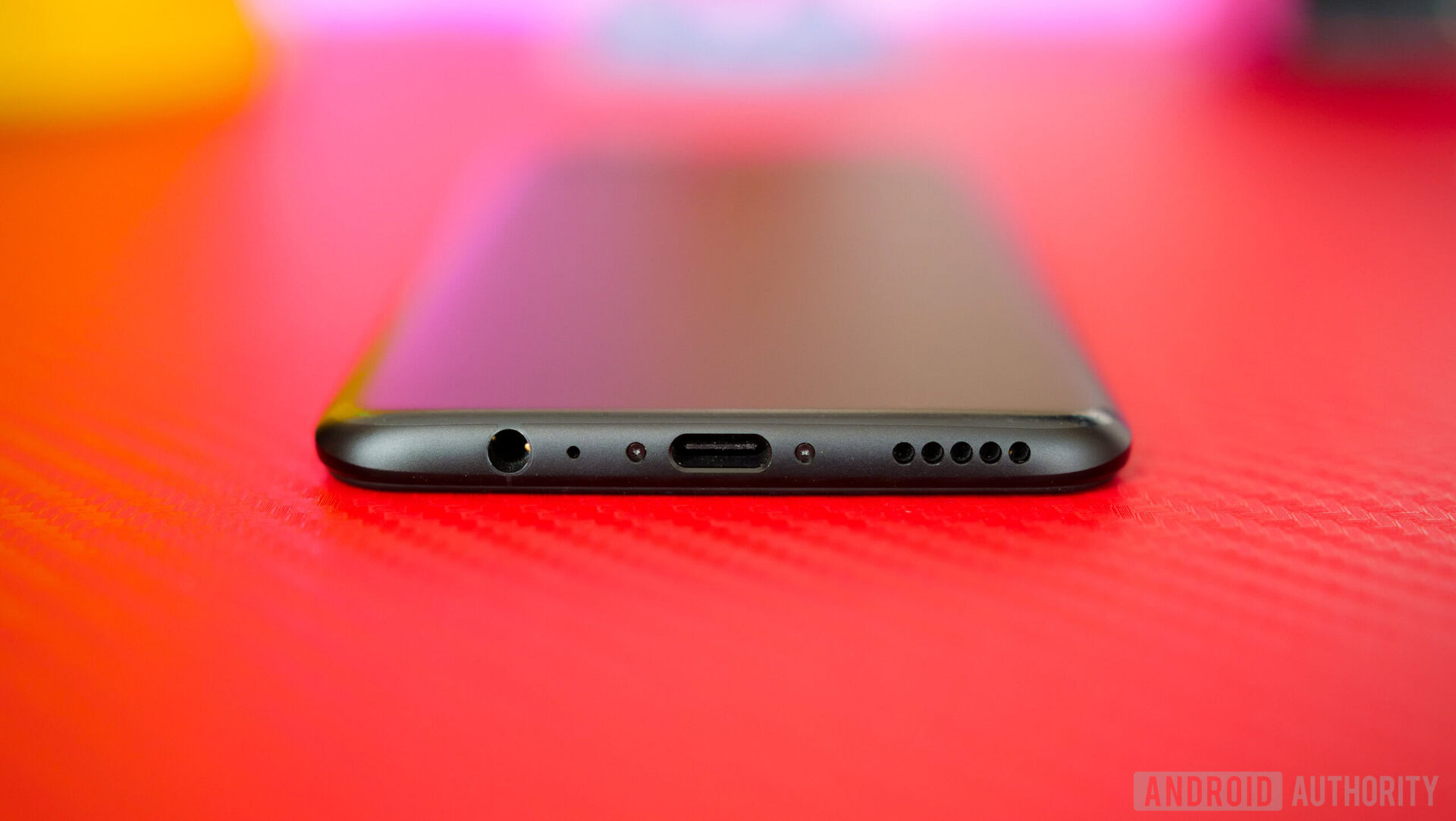
While many of you likely use headphones or earbuds to consume media, there are times when you’re going to want to use the built-in speaker. So how does the OnePlus 5 fare in the sound quality department? I’d say it’s above average, but not certainly not what we’d describe as amazing. The speaker is much louder than I expected, but it also gets somewhat distorted at max volume and it’s pretty easy to accidentally muffle with your palm when using the phone in landscape.
in most aspects, the OnePlus 5 is on par with other newer, pricier flagships -- though a few minor sacrifices are made to keep pricing down.
The OnePlus 5 speaker doesn’t begin to compete with some of the solid blasters we’ve seen from brands like HTC, but it’s far from what we’d describe as poor and gets the job done well enough.
When looking at the specs and features, the OnePlus 5 seems pretty close to being on par with other newer, pricier flagships… but that’s not to say that OnePlus didn’t cut a few corners in order to keep the pricing from getting too high. There’s no expandable storage or wireless charging, and the phone isn’t water and dust resistant. It’s that last point that probably matters the most, especially since wireless charging isn’t as common as it once was, and the 5 includes a large amount of internal storage.
With the exception of a few devices like the 2016 Google Pixel, most phones nowadays carry some sort of ingress protection. While we don’t find this to be a deal breaker, it might be for some. Still, you can’t expect OnePlus to offer every single feature found on more expensive phones, and overall there’s very little to complain about in terms of performance or hardware features.
Battery life
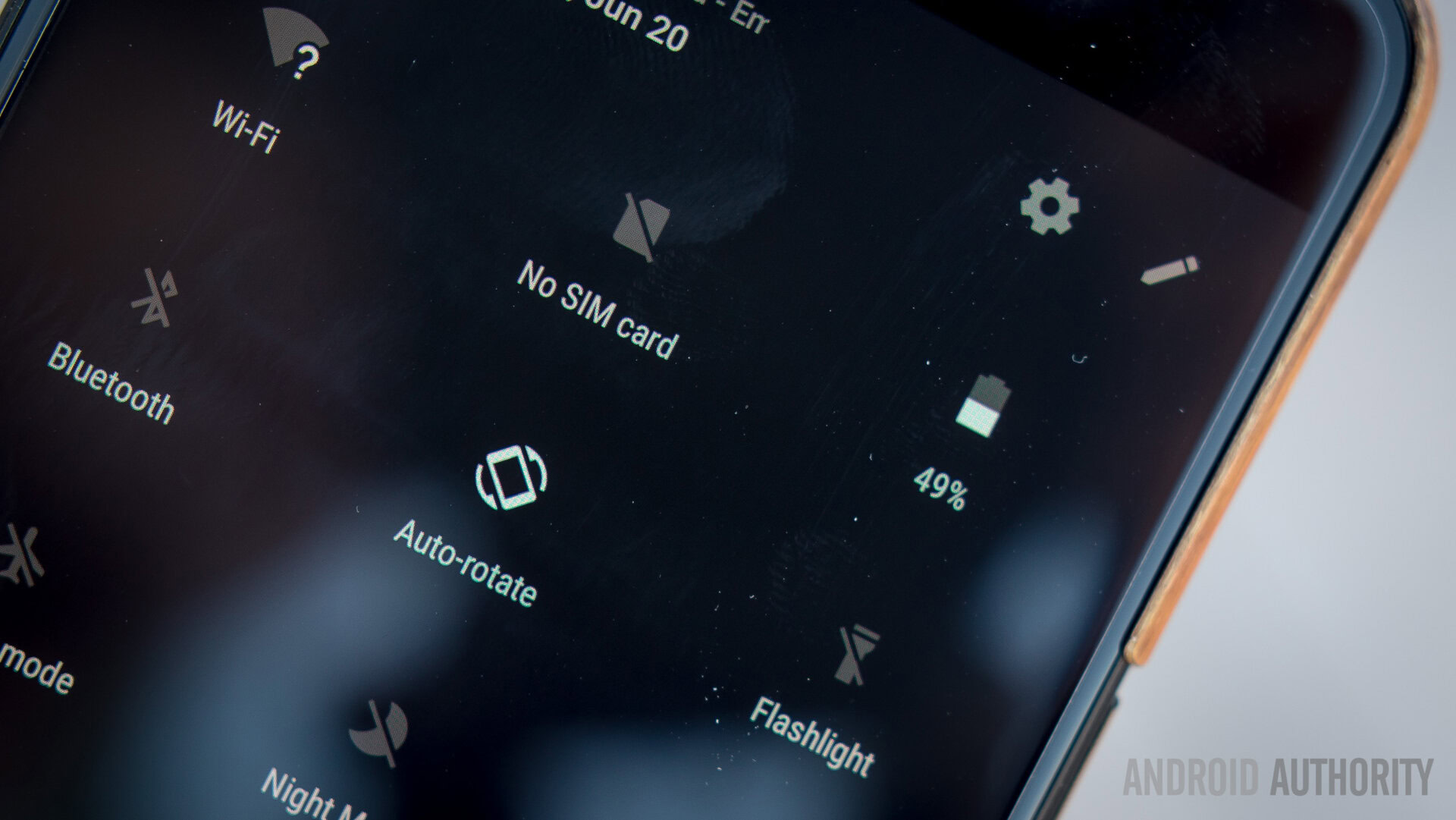
While the OnePlus 3T upgraded from the its predecessor’s 3,000 mAh battery to a much larger 3,400 mAh, the OnePlus 5 takes a small step backwards to 3,300 mAh. I can’t fault OnePlus for this, as its a small compromise required by the phone’s thinner design. And in reality, the difference is pretty much only on paper, as the OnePlus 5’s battery life is exceptionally good.
The 3,300 mAh battery lasts me comfortably throughout an entire day even with heavy use. That includes using the camera, watching quite a bit of YouTube, gaming for several hours, streaming music at the gym, and all the other usual stuff like reading emails and checking social media. On a much lighter day I’ll typically end the day with around 50%. When that happens I won’t charge the phone until the next day, so it is completely possible to get a day and half out of this phone.
Even if you go at it super hard, the good news is that OnePlus’ Dash Charge is absolutely amazing. It takes only 30 minutes to get a 60% charge, and roughly an hour and 20 minutes to go from empty to full. The quick charging here is insanely quick and power efficient, making the charging process so much easier and convenient.
Looking for more solid battery details, like full tests, screen-on time, and so forth? In order to get the review out to you in a timely manner and yet not sacrifice on the details, we’ll be bringing you a detailed OnePlus 5 battery review in the weeks to come, so stay tuned.
Camera

There are quite a few improvements found within the OnePlus 5, the biggest of which is easily the new dual camera system. Dual cameras are nearly a de facto setup for the majority of flagships nowadays, and every dual setup we’ve seen has had its own set of features that help it stand out from the crowd. Thankfully the OnePlus 5 is no exception.
Photos taken with the OnePlus 5 are well detailed, sharp without looking over sharpened, and color reproduction is more on the natural side and not overly saturated.
Most dual cameras either have the same resolution across both lenses or the secondary sensor is lower resolution. With the OnePlus 5 however, it’s the exact opposite. The main sensor is 16 megapixels with an f/1.7 aperture and electronic image stabilization. The secondary sensor is a 20 megapixel telephoto lens with a smaller f/2.6 aperture, though this lens doesn’t offer OIS or electronic stabilization. Similar to Apple’s implementation on the iPhone 7 Plus, the telephoto lens will let you optically zoom in by 2x without any loss in quality. (Update: Carl Pei has now clarified that the telephoto zoom on the OnePlus 5 is actually a combination of optical zoom and software: “Optical zoom is at 1.6x, the remaining 0.4x is realized through SmartCapture multiframe technology.”)
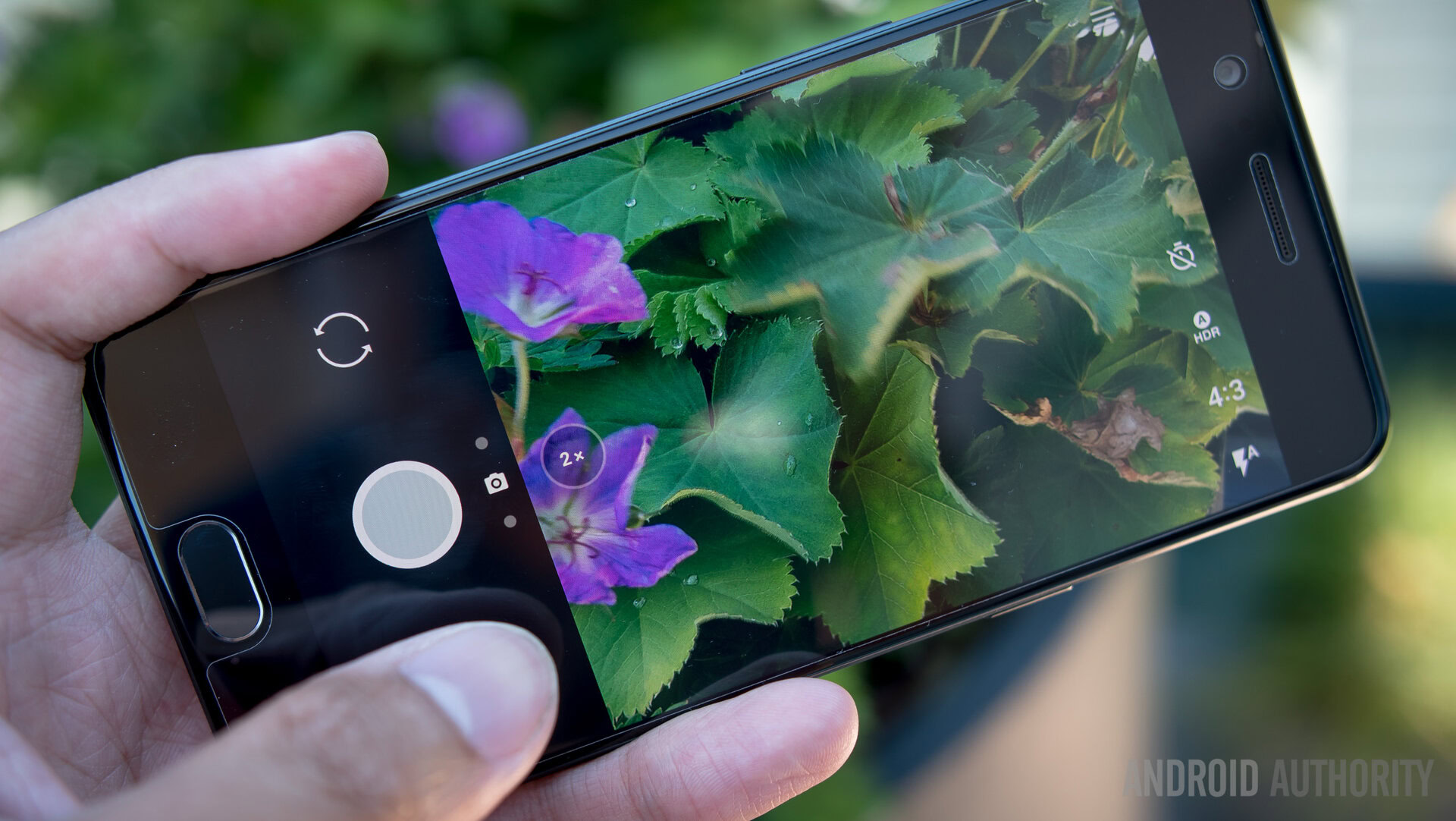
So how does this dual setup perform? Photos taken with the OnePlus 5 are well detailed, sharp without looking over sharpened, and color reproduction is more on the natural side and not overly saturated. The secondary telephoto lens is great for getting those closer up shots without losing as much detail as you normally would from purely digital zoom. It’s perfect for getting closer on anything you want, but I found it to be especially great for macro shots. It is important to mention that it does produce slightly different colors from the main lens and is a little more inconsistent with exposure.
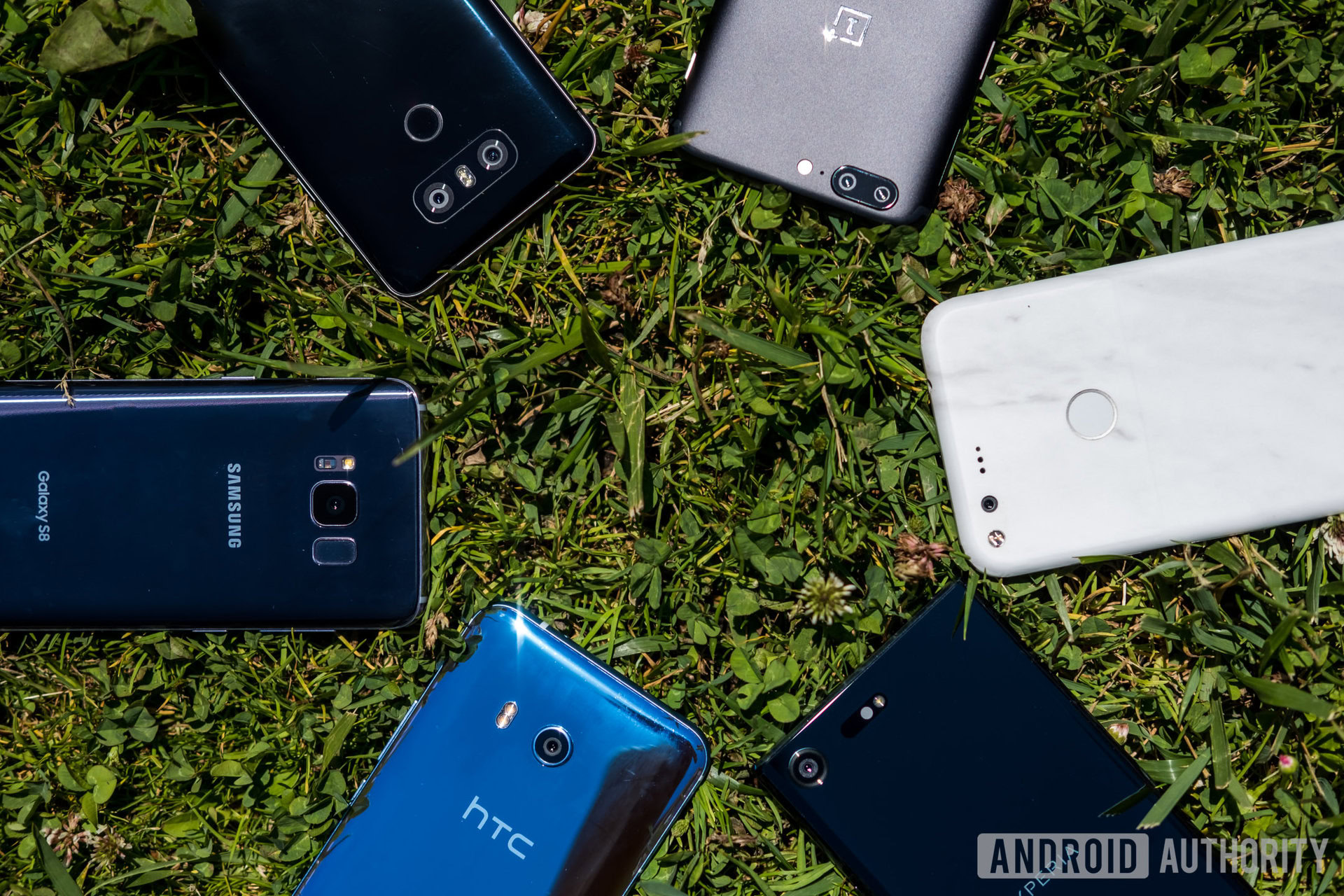
Low-light performance will depend on which camera you decide to use, with the second sensor being the weaker of the two due to a smaller pixel size, smaller aperture, and no stabilization. Photos from the telephoto lens are much more washed out, noisy, and full of lens flares and overblown highlights. White balance is the biggest issue of them all, though. The main sensor will give you much better results especially in terms of detail and color accuracy.
Turning to video, the camera is capable of recording 4K video, and EIS (electronic image stabilization) does a decent job at smoothing out any unwanted shakes and jitters. You can switch to the secondary sensor while recording to get closer on a subject, but because the second sensor lacks any form of stabilization the footage is noticeably more shaky.
Camera software improvements
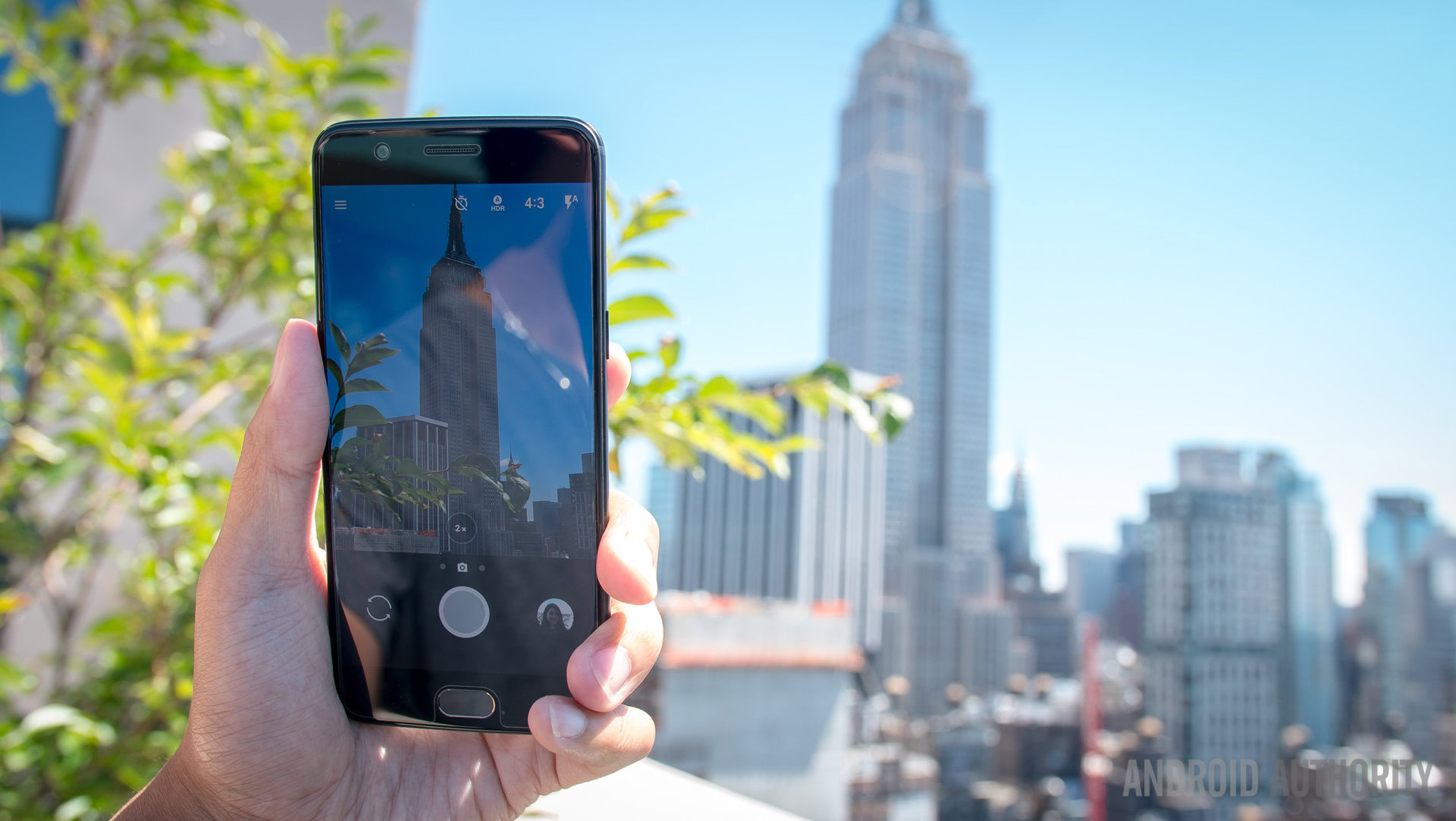
It’s not just the camera hardware that receives an upgrade with the OnePlus 5, as the software also has added a few improvements. First up, there’s a new portrait mode that simulates that nice blurry background or bokeh effect that you would normally get from a DSLR, while keeping the subject in razor sharp focus. Portrait mode pretty much works just as advertised. As long as you’re following the camera’s guidelines you can get some very convincing bokeh that creates a nice separation between the subject and the background.
For those that like as much control over the camera as possible, you’ll be happy to learn that the manual mode from the OnePlus 3 family has been replaced with a new pro mode that offers more control and a few nice enhancements. You can control all of the usual settings like ISO, white balance, shutter speed, focus, and exposure. But what I really like is the built-in histogram, the toggle to enable RAW directly on the viewfinder, and a horizon leveler to help you gauge when your shot is perfectly straight.
Software
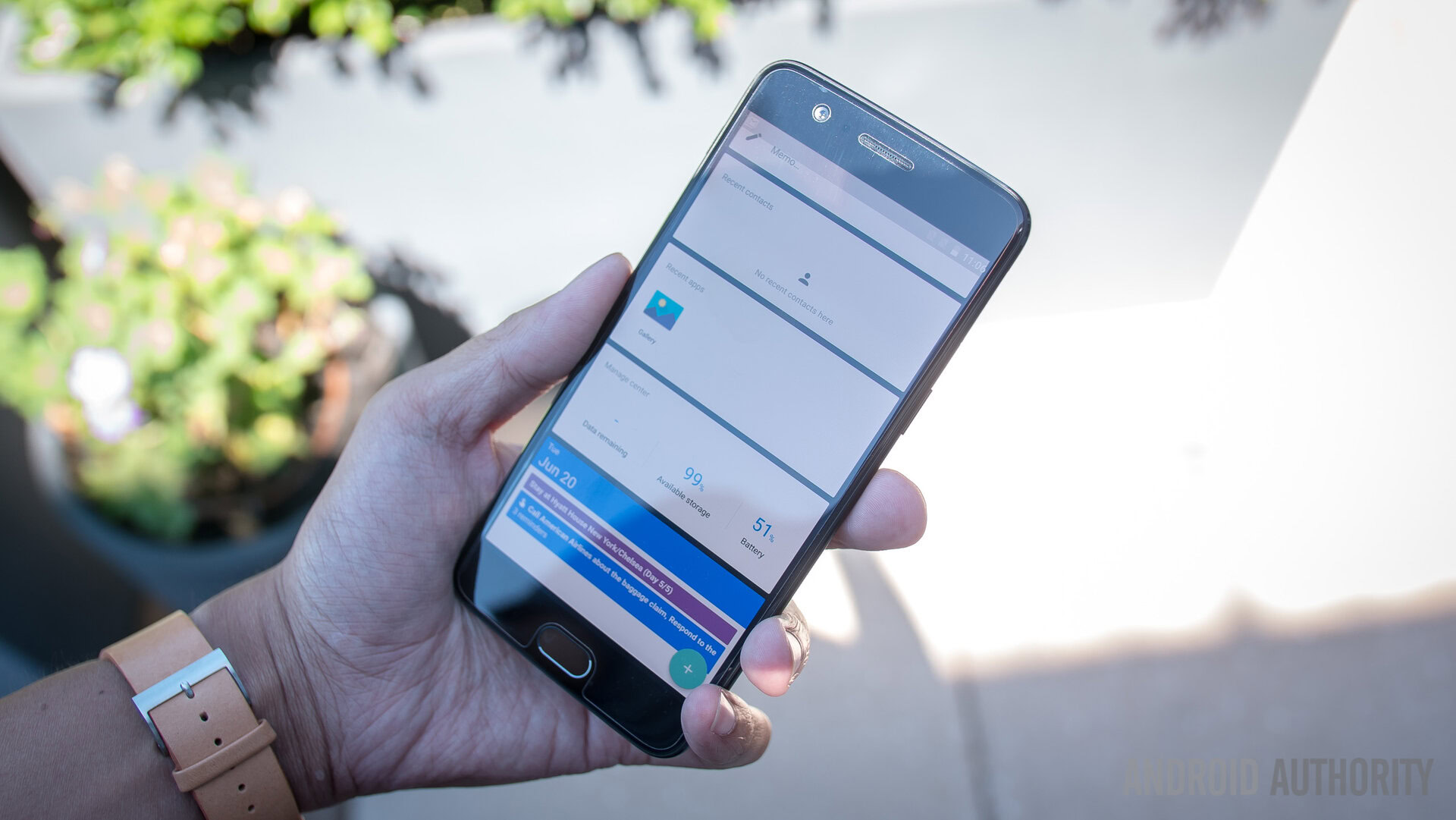
One of the best things about OnePlus has always been its software. The OnePlus 5 is running the latest version of the company’s OxygenOS, which is based on stock Android 7.1.1 Nougat with a few more customizations baked in than you’d find with “pure Google Android” software. When OxygenOS first hit the scene after the company’s relationship with the ill-fated Cyanogen went south, it was promising yet raw. Thankfully it’s come a long way since then. While much of it remains the same on the surface, you can expect more bug fixes and software optimization which lend to an incredibly snappy experience.
Some of the returning features worth highlighting are the ability to customize accent colors, switch between a light or dark theme, and enable on-screen navigation keys. There are also a variety of off-screen gestures to open the camera, turn on the flash, or open up any application of your choice and other useful gestures like double tap to wake.
As for what’s new? OnePlus now includes a reading mode that turns the entire screen to grayscale, which, combined with a blue light filter, provides a similar experience to what you would get on an e-reader. There are also a few other nice extras like a do not disturb mode made specifically with gaming in mind, an updated app drawer that swipes from the bottom (just like the Pixel Launcher), and at least a few other minor cosmetic improvements that further compliment what was already a great software experience.
Specifications
| OnePlus 5 | |
|---|---|
Display | 5.5-inch AMOLED 1920 x 1080 resolution 401 ppi 16:9 aspect ratio 2.5D Corning Gorilla Glass 5 |
Processor | 2.45 GHz octa-core Qualcomm Snapdragon 835 mobile platform |
GPU | Adreno 540 |
RAM | 6/8 GB LPDDR4 |
Storage | 64/128 GB UFS 2.1 2-lane |
MicroSD | No |
Cameras | Rear camera Main: 16 MP Sony IMX 398 sensor, 1.12 μm, ƒ/1.7 aperture, EIS, dual LED flash Telephoto: 20 MP Sony IMX 350 sensor, 1.0 μm, ƒ/2.6 aperture Front: 16 MP Sony IMX 371 sensor, 1.0 μm, ƒ/2.0 aperture, EIS |
Battery | 3,300 mAh Non-removable Dash Charge (5V 4A) |
Water resistant | No |
Material | Anodized aluminum |
Ports | USB Type-C (USB 2.0) 3.5 mm headphone jack |
Connectivity | Wi-Fi: 802.11 a/b/g/n/ac, 2.4/5 GHz, 2x2 MIMO Bluetooth 5.0, supports aptX & aptX HD NFC GPS, GLONASS, BeiDou |
Sensors | Fingerprint Hall Accelerometer Gyroscope Proximity Ambient light Electronic compass Sensor hub |
Audio | Bottom-facing speaker 3 microphones with noise cancellation Supports AANC Dirac HD Sound |
Network | LTE: Supports 3xCA, 64QAM & 256QAM Supports up to DL CAT 12 (600 Mbps) / UL CAT 13 (150 Mbps) depending on carrier support Bands: FDD LTE: Bands 1/2/3/4/5/7/8/12/17/18/19/20/25/26/28/29/30/66 TDD-LTE: Bands 38/39/40/41 TD-SCDMA: Bands 34/39 UMTS (WCDMA): Bands 1/2/4/5/8 CDMA: BC0 GSM: 850/900/1800/1900 MHz |
SIM | Nano Dual-SIM |
Software | Android 7.1.1 Nougat OxygenOS |
Dimensions and weight | 154.2 x 74.1 x 7.25 mm 153 g |
Colors | Midnight Black, Slate Gray |
Gallery
Pricing and final thoughts
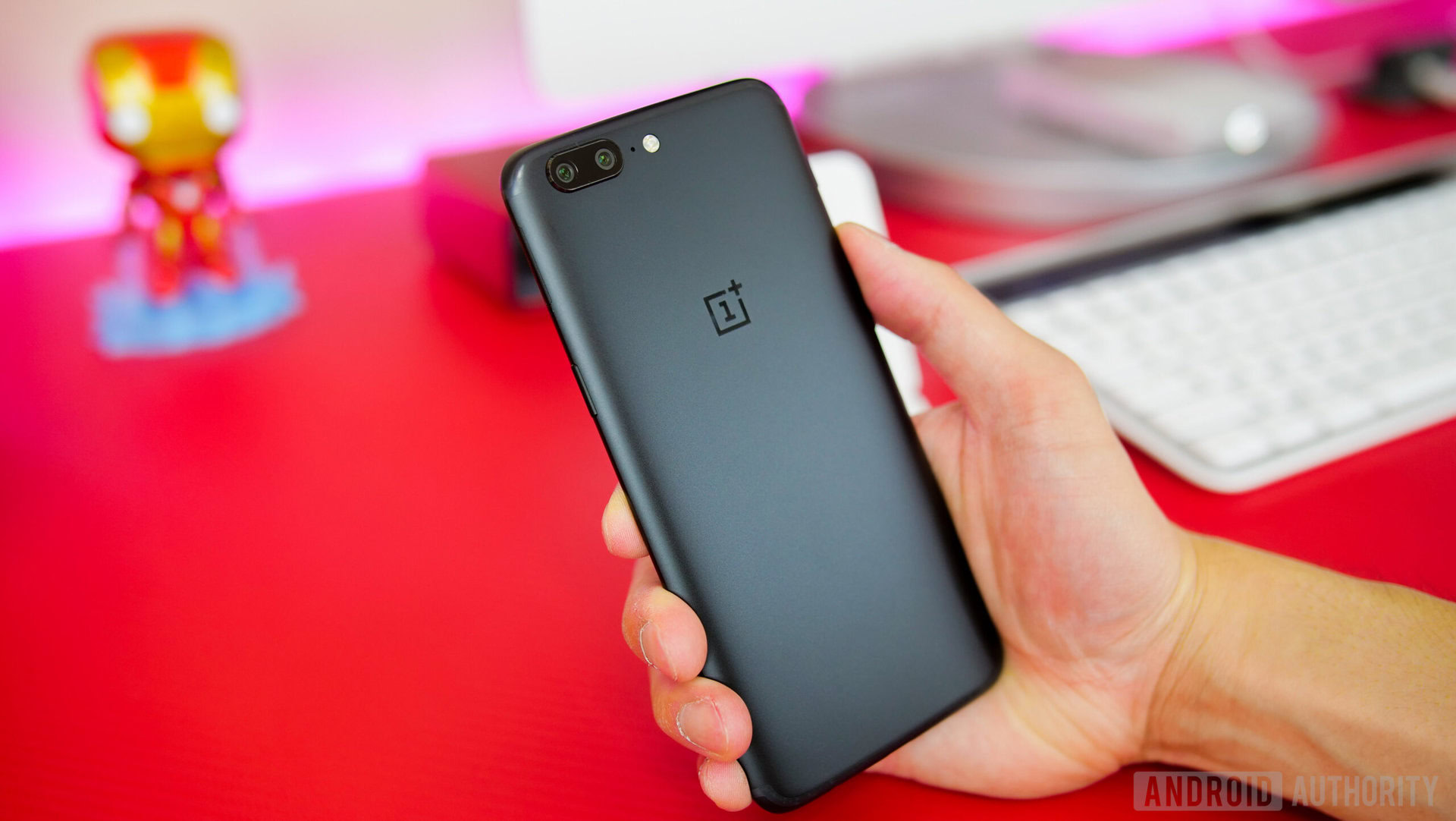
We’ve already talked a little about pricing, but to reiterate, the base model of the OnePlus 5 will set buyers back $479/€499, with the more powerful Midnight Black model selling for $539/€559. So is it worth the asking price? Absolutely.
While many considered previous OnePlus models as 'lower-cost flagships', the OnePlus 5 brings an experience that is on par, and in some ways above the competition.
Sure, the OnePlus 5 has gone up in price from its predecessors, but there’s more packed into this phone than ever before and that makes it completely worth the price hike. Even better, it’s still cheaper than most other flagships offered on the market today. Yes, it’s missing a few key extras like expandable storage and water resistance, and the design sure isn’t going to please everyone. But at under $550, you’re going to have a hard time finding a flagship that offers a better experience.
While many considered previous OnePlus models as “lower-cost flagships”, the OnePlus 5 brings an experience that is on par, and in some ways above the competition… without charging the premium that brands like HTC, Samsung, and Apple expect you to pay. In fact, in many ways the downsides to the OnePlus 5 are the same as found with the Pixel family – an Apple-inspired design, no wireless charging, no expandable storage, and no waterproofing — but you get a faster processing package and a lower starting price.
At the end of the day, we feel that the OnePlus 5 is a no-brainer and we wholeheartedly recommend it. What do you think of OnePlus latest flagship? Does the Never Settle promise live on? Let us know your thoughts down in the comments.
[aa_content_ad aa_single_ad_type=”single_mobile” aa_single_ad_pos=”center” ][/aa_content_ad]